Facebook, Instagram, LinkedIn, … who hasn’t used them? Social media are booming and not only used by individuals. More and more companies have social media profiles too. At The Learning Hub, we’ve set up a special group that takes care of our social media channels. In this blog post, we’ll give you an insight into our social media approach.
The editorial team: ‘De Redactie’
The Learning Hub is a small organisation. That’s why we don’t have a separate department that keeps track of our social media strategy. So, you might want to know how we organise it. Well, each year several colleagues sign up to join the Social Media team. We’ve might not have a separate department, but we do have a dedicated team that takes care of our presence on our social media platforms! To make it even more official we gave ourselves an official name: ‘De Redactie’.

Running a company’s social media is hard work. You have to decide what and when to post updates on your social media channels. Therefore ‘De Redactie’ schedules editorial meetings. We meet once a month to evaluate our work and put together the content for the next month. By evaluating the content that has been posted, we can find out which content works best and what’s the best time to post on social media. Every social media platform has its analytics page, where you can find how many people visited your social media page, how many people you’ve reached with your posts, etc. It’s a handy tool that helps us with our strategy. Thus, we recommend using it in your strategy.
The way we work
Keeping track of your social media content requires some organisation. Let us tell you how we manage our social media channels.
Social Media Tool
To keep track of what and when we post content on LinkedIn and Instagram, we use a tool called Loomly. It’s a great content management tool which allows us to develop our social media agenda. We’ve linked our LinkedIn and Instagram profiles to our Loomly-account. It’s the central place where we create all our social media posts. Loomly allows you to define the specific content of each post for the channels you’ve selected. You also determine the date and time of the post. Loomly will then automatically publish the social media post.
Montly meetings
In our monthly meetings, we decide what we will post about and put it in Loomly. Then, on the correct time and date, Loomly makes sure it’s shared on our social media. We ensure that we post regularly and that our content is a good mix of fun and serious business. Furthermore, we divide the different posts among the members of ‘The Redactie’. In this way, we’re certain that the visual of a post will be ready when the post needs to be published. And finally, we use our monthly meetings to look at the analytics of our LinkedIn and Instagram profiles. They give us valuable information about how our posts score on LinkedIn and Instagram, if we should adjust our social media strategy, etc.
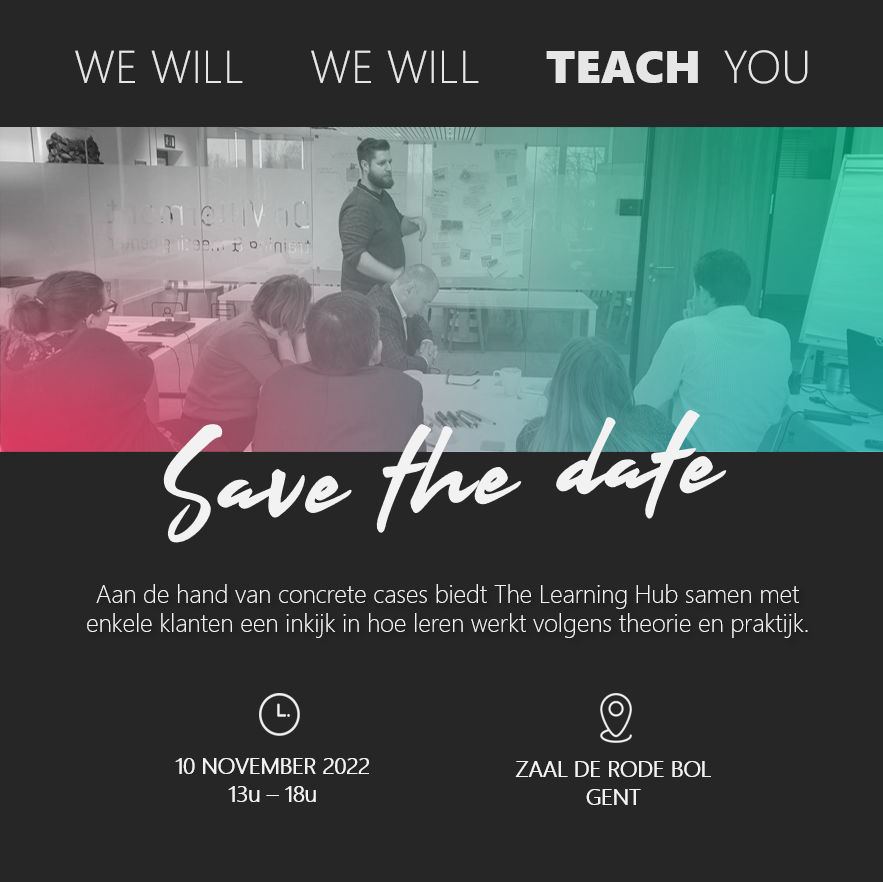
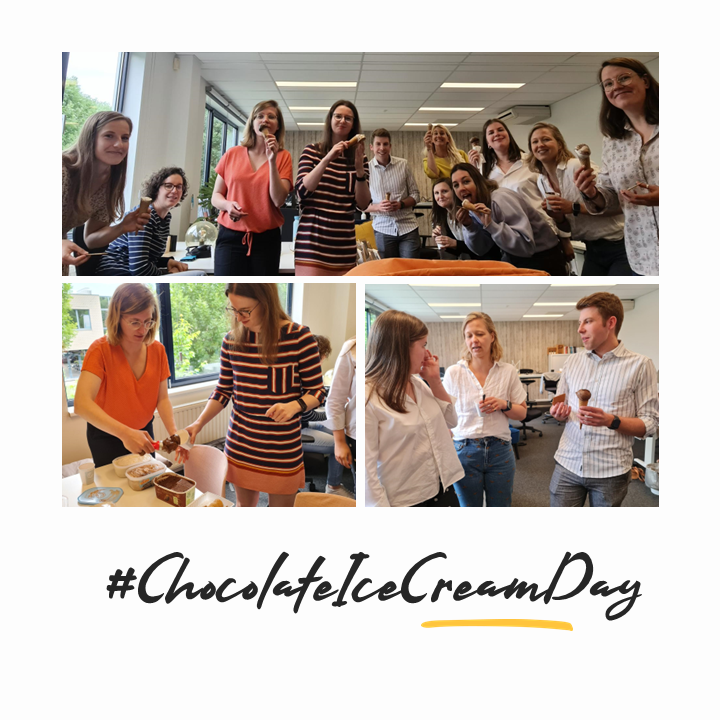
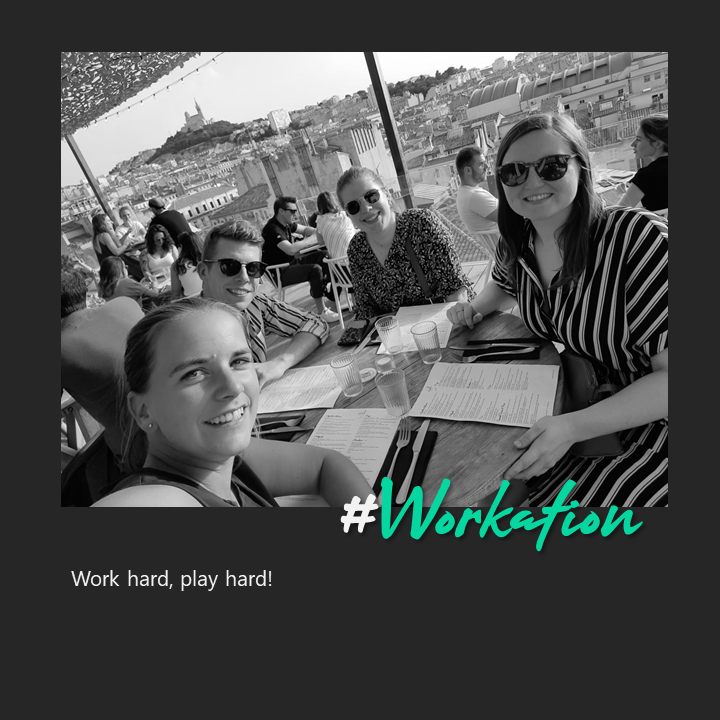
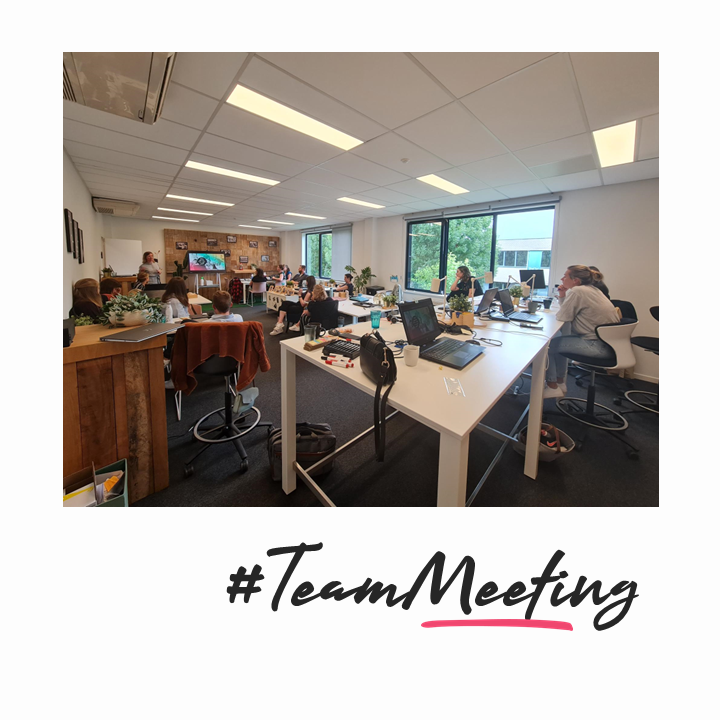
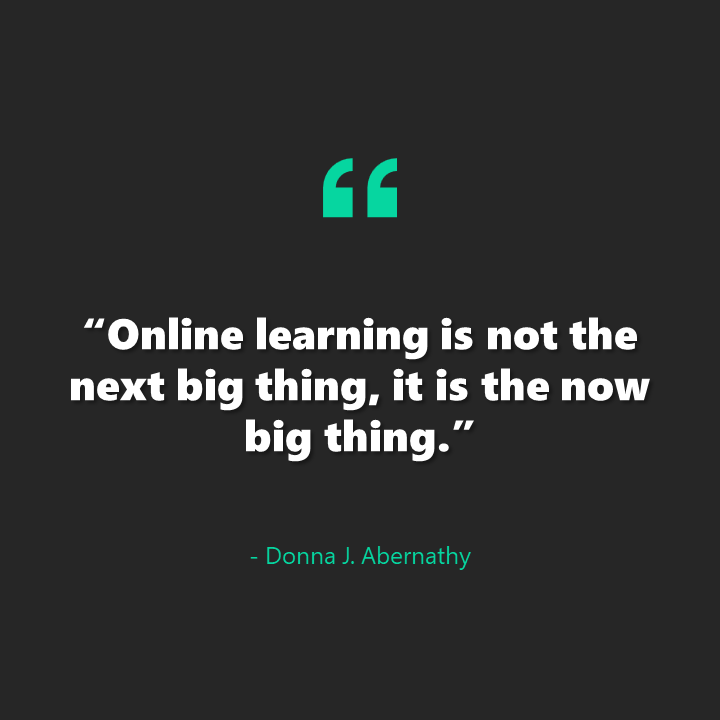
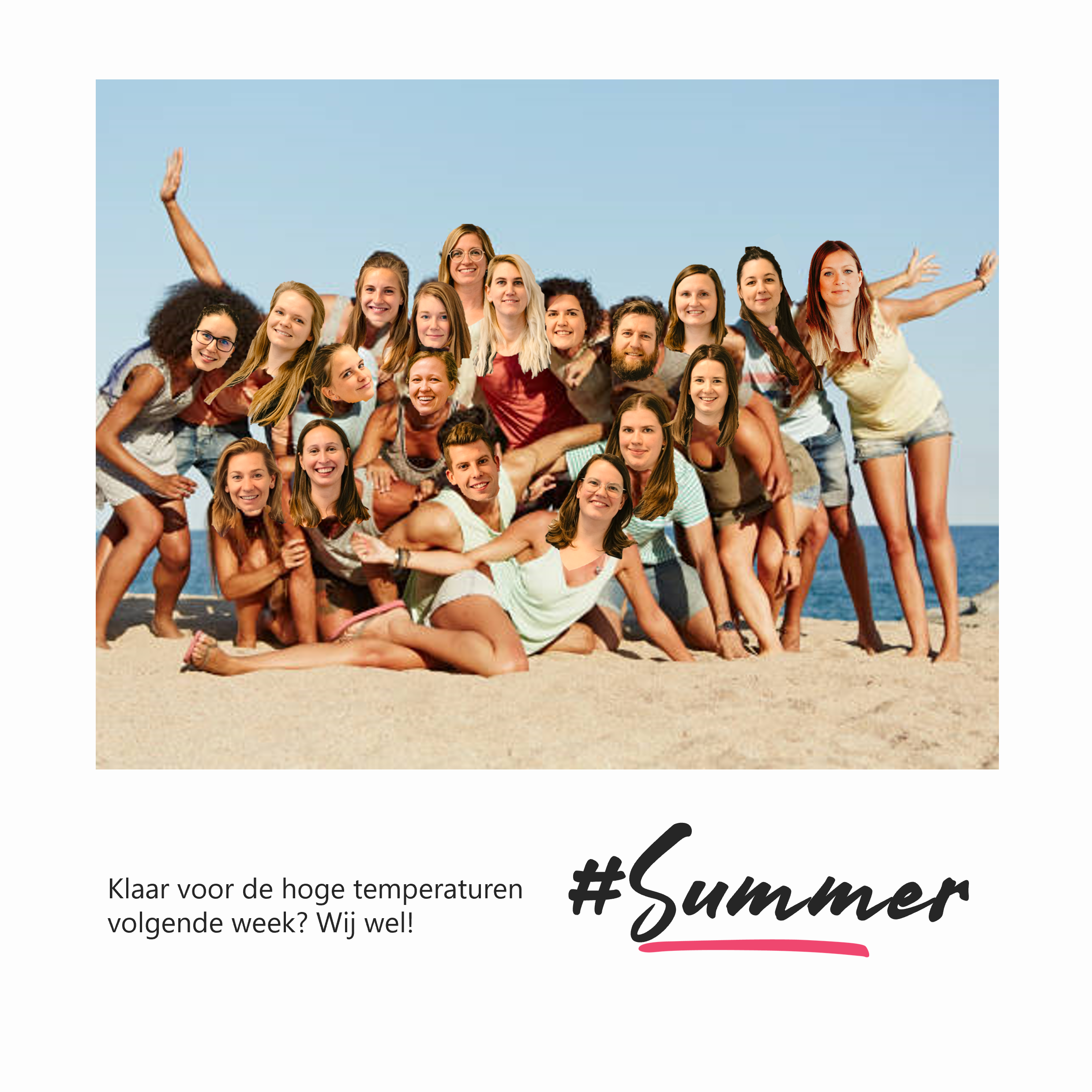
Branding
If you follow us on LinkedIn or Instagram, you might have noticed that we changed our look. On social media, it’s important to be consistent. This is how you make your brand recognizable and distinguishable from others. Therefore we had our graphic designers develop templates. By doing so, we make sure that the content on our social media pages corresponds with our brand. Our brand becomes recognizable, and we distinguish ourselves from other companies in the L&D industry.
Some tips
Managing your company’s social media channels is a process of trial and error . We’re not experts and do not want to pretend to be experts, but we do have some tips. These are things we’ve learned by doing.
1. Provide a visual element, preferably with people
Social media are visual platforms. The algorithms behind those platforms like posts with photos and videos, and make sure that they are spread more widely. We’ve noticed that posts with people in a photo get more views, likes, and comments than posts without people in a photo.
2. Tag people and organisations in your post
Post where people or organisations are tagged, do it remarkably better on our social media channels. Tagged posts do not only appear on your timeline, but also on the timeline of the person or organisation that’s tagged. Therefore, your post reaches a bigger audience. Tag them away we say!
3. Differentiate your content
Not all social media channels are the same. LinkedIn is perceived to be a platform that’s more suitable for business, while Instagram is perceived to be a more personal platform where you share pictures and videos from your personal life. That’s why we use Instagram to give people a look behind the scenes. We share fun office activities and make more informal content. On LinkedIn, we post content that’s related to our day-to-day business in a more formal way.
4. Check your analytics
Measure twice, cut once. Social media isn’t an exact science. A lot of what we know comes from looking at the analytics of our LinkedIn and Instagram page. We recommend that you look at least once a month at the analytics of your social media. We experimented with different times and days on our social media before we found out what was the best moment for us to post something. On LinkedIn, every post published around noon scored well. We’ve noticed that Instagram is mostly used after office hours. That’s why we try to publish posts on Instagram after 5 pm.

5. Make good agreements
If you, like us, have different people working on social media, you must make good agreements. When we put together our Social Media agenda, we also decide who’s responsible for each post. Furthermore, it’s important to make good agreements about your branding. Our graphic designers made different templates and explained to us how to use them.
This is how we manage our social media platforms at The Learning Hub.
Do you like to learn more about The Learning hub or exchange social media experiences?
